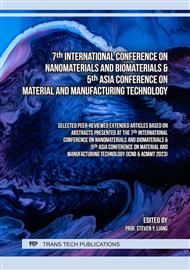p.11
p.21
p.29
p.37
p.45
p.53
p.61
p.73
p.81
Effect of Individual Alloying Addition on the Microstructure and Creep Behavior of Squeeze Cast AZ91 Magnesium Alloy
Abstract:
The microstructure of AZ91 (Mg-Al) alloy is comprised of α-Mg and β-Mg17Al12 massive phase. The lower melting point associated with the β-Mg17Al12 phase results in poor creep resistance of the alloy. In the present study, the AZ91 alloy with the addition of calcium (Ca, 1wt%) and cerium (Ce, 1wt%) is cast, and their effect on the microstructure and creep behavior of AZ91 alloy have been investigated. Thermally stable phases such as Al2Ca and Al11Ce3 are introduced in the AZ91 alloy through the addition of Ca and Ce elements. Energy dispersive spectroscopy (EDS) and x-ray diffraction analysis confirmed the presence of these intermetallic phases in the microstructure. Tensile creep tests on the as-cast samples were performed at 175°C temperature under 50 MPa stress. The study shows that the creep resistance of AZ91 alloy is greatly improved with the presence of Al2Ca and Al11Ce3 intermetallic phases because of their better thermal stability than β-Mg17Al12.
Info:
Periodical:
Pages:
45-50
Citation:
Online since:
February 2024
Authors:
Price:
Сopyright:
© 2024 Trans Tech Publications Ltd. All Rights Reserved
Share:
Citation:



